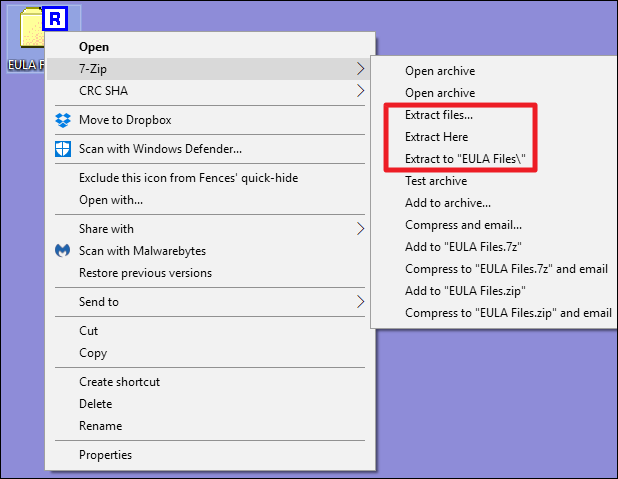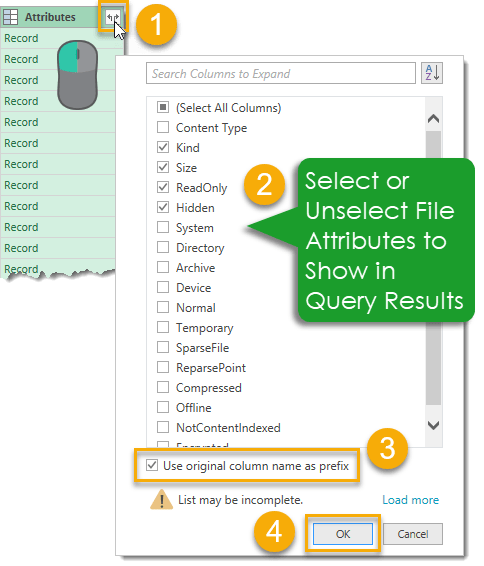In this article, we will look at examples of using constructions to loop over all files and folders on a disk or in a specific directory, you can widely use it in your PowerShell scripts.
- Extract All Folders
- Extract Files From Folders And Subfolders Mac Folder
- Extract Files From Multiple Folders
- Extract Files From Folders And Subfolders Mac Shortcut
Usually, the task of iterating over all file system objects in a directory arises when you need to perform a certain action with all nested objects. For example, you need to delete, copy, move files, add or replace lines in all files in the specific directory by some criteria.
One way to do that is with a simple search. Go to the Attachments folder in the Finder. Then Command+f to search. At the top you should see 'Search:' and then 'This Mac' and 'Attachments.'.
To get a list of child objects (folders and files) in a directory, use the Get-ChildItem PowerShell cmdlet. This is the most popular file system cmdlet. There are several aliases for ChildItem: gci, dir, ls.
- I am wondering if it is possible to extract files from folders on an automated basis. I can manually go and and extract these but lets be serious, that is going to take a long time. I have a lot of folders on my external hard drive and I want to extract all of the files from the folders and put them in another general location.
- These files & folders could be very important for us & the other person can edit them without our instruction. This article will help us in keeping track of which file or folder is edited with their respective date, time, size, etc. In this post, we will learn how to retrieve a list of files in a folder in Excel. We will import all the files.
- As strange as it seems, there is no simple way in the Finder to count all files in a folder, including the files in the subfolders. Some solutions were discussed in an earlier macosxhints article, but there is also a straightforward way to do this using AppleScript. Copy and paste this script into Script Editor, and save it as an Application. Then just drag and drop a folder onto the icon,.
The Get-ChildItem cmdlet displays a list of child (nested) objects on a specified drive or directory. The path to the directory is specified through the –Path attribute.
Mac os cataline. For example, to list the files in the C:PS directory, run the command:
However, it displays a list of objects located in the root of the specified directory. You can also display the contents of child directories using the –Recurse parameter:

As you can see, the contents of each subdirectory are displayed sequentially.
Now, let's look at the general structure of the ForEach loop when using the Get-ChildItem cmdlet:
Also, you can use such a loop structure (but we like it less):
For example, you can delete all files with the *.log extension in the specified directory and all subfolders (we won't really delete the files from disk by adding the parameter
The script found 3 files with the extension log and indicated that they could be deleted by this script.
READ ALSOPowerShell Function Parameters: How to Add?Consider a script that deletes files older than 10 days in a directory (it can be used when you need to clean up the logs folder, or public network folders):
The following file loop example allows to find files containing the text ‘flush_log' or ‘error' for all *.log files in the directory, and saves the found lines to files with a new extension (_outlog): Mac os system update.
Such a PowerShell script can be useful when searching for specific event entries in log files and filtering out all that is unnecessary.
Extract All Folders
AuthorRecent PostsCyril KardashevskyI enjoy technology and developing websites. Since 2012 I'm running a few of my own websites, and share useful content on gadgets, PC administration and website promotion.Extract Files From Folders And Subfolders Mac Folder
Latest posts by Cyril Kardashevsky
As you can see, the contents of each subdirectory are displayed sequentially.
Now, let's look at the general structure of the ForEach loop when using the Get-ChildItem cmdlet:
Also, you can use such a loop structure (but we like it less):
For example, you can delete all files with the *.log extension in the specified directory and all subfolders (we won't really delete the files from disk by adding the parameter
The script found 3 files with the extension log and indicated that they could be deleted by this script.
READ ALSOPowerShell Function Parameters: How to Add?Consider a script that deletes files older than 10 days in a directory (it can be used when you need to clean up the logs folder, or public network folders):
The following file loop example allows to find files containing the text ‘flush_log' or ‘error' for all *.log files in the directory, and saves the found lines to files with a new extension (_outlog): Mac os system update.
Such a PowerShell script can be useful when searching for specific event entries in log files and filtering out all that is unnecessary.
Extract All Folders
AuthorRecent PostsCyril KardashevskyI enjoy technology and developing websites. Since 2012 I'm running a few of my own websites, and share useful content on gadgets, PC administration and website promotion.Extract Files From Folders And Subfolders Mac Folder
Latest posts by Cyril Kardashevsky (see all)Extract Files From Multiple Folders
- - February 25, 2021

